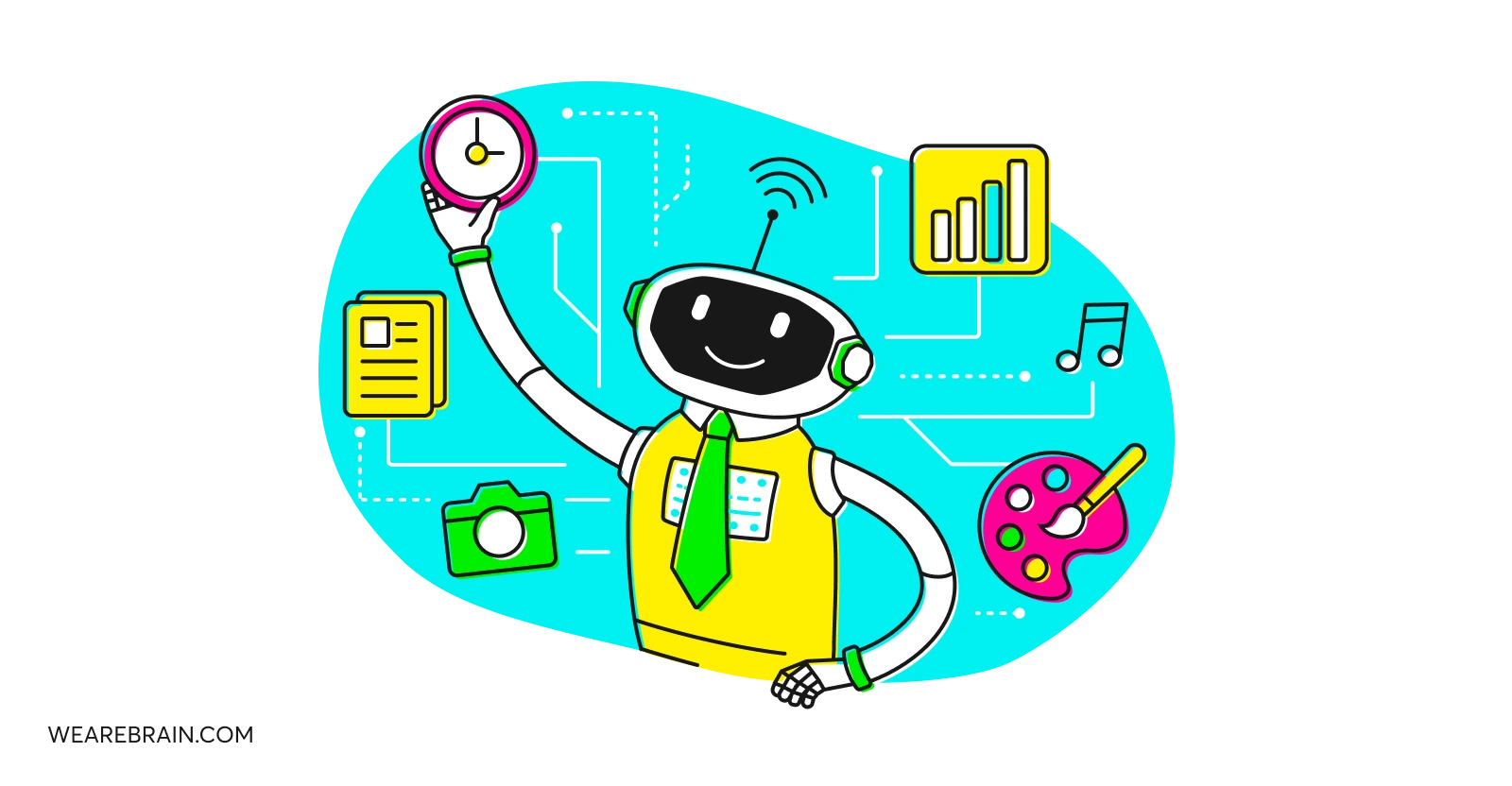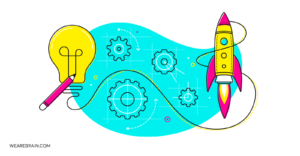Build your own AI agent: No-code to pro-code in 2025

The world of artificial intelligence keeps on moving fast, and AI agents are at the forefront of the most recent AI trends. Whether you’re a seasoned developer or just starting your tech journey, learning how to build an AI agent has never been more relevant—or more accessible.
From automating complex workflows to creating intelligent assistants, they are revolutionising how we approach problem-solving in technology. But here’s the exciting part: you don’t need a degree in computer science to build one. In some cases, you can forget all about writing code and still be able to build your own AI assistant.
Today, we explore how anyone can create an AI agent, regardless of their technical expertise.
Understanding AI agents: The basics
Before diving into how to build an AI agent, let’s clarify what makes these digital helpers unique. Think of an AI agent as a sophisticated digital assistant that can perceive its environment, make decisions, and take actions to achieve specific goals. Unlike traditional AI applications that perform single tasks, agents can handle complex workflows and adapt to changing situations.
An AI agent combines three essential elements:
- Perception: The ability to understand input from its environment
- Reasoning: Processing information and making decisions
- Action: Executing tasks based on its decisions
Real-world examples include customer service bots that can understand the context and maintain conversation history, trading agents that monitor market conditions and execute trades, and smart home systems that learn and adapt to your preferences.
Choosing your development path: Which approach fits you?
When it comes to building an AI agent, there’s no one-size-fits-all solution. The best approach depends on your technical skills, project requirements, and available resources. Let’s break down your options:
| Approach | Time to build | Customisation | Technical skills | Perfect for |
| No-code | Fast (Hours to days) | Limited but growing | Minimal | Entrepreneurs, business professionals, citizen developers |
| Low-code | Medium (Days to weeks) | Moderate to high | Basic programming | Tech-savvy professionals with basic coding knowledge |
| Pro-code | Long (Weeks to months) | Unlimited | Advanced programming (Data modelling, machine learning) | Professional developers, AI engineers |
No-Code development: Democratizing AI agent creation
No-code platforms are transforming how we think about building AI agents. What was once a complex programming challenge is now an accessible visual experience. They empower business professionals, marketers, and innovators to bring their AI agent ideas to life without writing a single line of code.
Platforms like n8n, Zapier and Make have become the go-to solutions for creating sophisticated AI workflows. They excel at connecting various services and automating complex processes through intuitive interfaces. Power Automate, with its deep Microsoft ecosystem integration, has made enterprise-grade AI capabilities accessible to citizen developers.
The beauty of no-code development lies in its visual approach to problem-solving. Instead of wrestling with complex code, you’ll work with visual workflows that represent your agent’s decision-making process. This approach dramatically reduces the learning curve while still enabling the creation of powerful AI agents.
If you are considering this option, here is a step-by-step path to building a no-code AI agent:
- Choose a platform based on your use case and required integrations
- Connect your desired AI services (OpenAI, Google AI, Azure Cognitive Services)
- Design your agent’s workflow using drag-and-drop interfaces
- Set up triggers and actions for your agent
- Configure error handling and fallback options
- Test your agent’s behaviour in various scenarios
- Deploy and monitor performance
Pro tip: Start with a simple use case, like building an AI agent that monitors emails and automatically categorises and responds to customer inquiries. This helps you understand the platform’s capabilities before tackling more complex projects.
Low-code development: The middle ground
Low-code development represents an elegant balance between simplicity and customisation, perfect for those who want more control than no-code platforms offer but aren’t ready for full custom development. This approach has gained significant traction among tech-savvy professionals who understand basic programming concepts but need to move faster than traditional development allows.
Platforms like OutSystems and Mendix shine in this space, offering robust development environments that combine visual tools with the flexibility to add custom code when needed. They particularly excel in creating AI agents that need to integrate with existing business systems or require custom user interfaces.
What makes low-code development powerful is its ability to leverage pre-built components while allowing for customisation. You can rapidly develop the core functionality using visual tools, and then fine-tune specific features with custom code. This hybrid approach often results in the perfect balance between development speed and customisation.
Sounds like a fit? Then you will follow these steps to get started with your low-code AI agent:
- Set up your development environment and choose your platform
- Create the basic structure using visual components
- Design your agent’s user interface (if required)
- Integrate necessary AI services through available connectors
- Add custom code for specific functionalities
- Implement error handling and monitoring
- Test thoroughly across different scenarios
- Deploy to your chosen environment
Remember: Low-code doesn’t mean no-code. A basic understanding of programming concepts will help you make the most of these platforms.
Pro-code development: Full control
For those ready to build AI agents from scratch, the pro-code approach offers unlimited possibilities.
Custom software development represents the pinnacle of AI agent creation, and it will give you complete control over your agent’s architecture and capabilities. This approach is ideal for creating highly specialised AI agents that need custom functionality, unique integrations, or specific performance requirements.
The pro-code journey involves working with powerful frameworks and libraries that form the backbone of modern AI development. Python has emerged as the lingua franca of AI development, thanks to its rich ecosystem of machine learning libraries and natural language processing tools. Frameworks like TensorFlow and PyTorch provide the building blocks for creating sophisticated AI models that power your agent’s decision-making capabilities.
Supporting these frameworks, your AI agent’s architecture needs to incorporate powerful NLP libraries like spaCy or NLTK for language processing, robust API integration capabilities for seamless communication with external services, and cloud infrastructure such as AWS SageMaker or Azure ML for scalable deployment and operation. This technological trinity forms the foundation that enables your agent to understand, connect, and operate effectively in real-world scenarios.
A possible roadmap for building a custom AI agent would look like this:
- Define your agent’s architecture and technical requirements
- Set up your development environment with necessary frameworks
- Implement the core AI agent class structure
- Develop perception, reasoning, and action components
- Integrate with required AI models and services
- Create monitoring and logging systems
- Implement comprehensive testing
- Set up CI/CD pipelines
- Deploy to production with scaling capabilities
Understanding AI architecture
Curious about step 1? Here’s a simplified architecture for a custom AI agent (in Python):
class AIAgent:
def init(self):
self.state = self.initialize_state()
self.model = self.load_ai_model()
def perceive(self, input_data):
# Process input and update state
pass
def reason(self):
# Make decisions based on state
pass
def act(self):
# Execute actions based on reasoning
pass
This architecture follows the Sense-Plan-Act (SPA) paradigm, a fundamental concept in AI agent design. Here’s why each component matters:
Perception (sense):
- Handles input processing and state management
- Maintains context through memory storage
- Ensures data consistency and quality
Reasoning (plan):
- Leverages loaded AI models for decision-making
- Considers historical context from memory
- Evaluates multiple possible actions
Action (act):
- Executes the selected action
- Updates agent state and memory
- Provides feedback for future decisions
This architecture is extensible and can be adapted for various use cases, from chatbots to autonomous systems. The addition of memory enables the agent to maintain context and learn from past interactions, making it more sophisticated than simple stimulus-response systems.
Best practices and future considerations
Building AI agents requires careful attention to both current best practices and future scalability. Here are some key considerations that will set your AI agent up for success.
1. Start simple
Starting with simplicity is crucial in AI agent development. Rather than attempting to build a complex system that handles multiple tasks simultaneously, focus on creating an agent that excels at a specific function. This approach not only reduces initial development complexity but also provides a solid foundation for future iterations. For instance, if you’re building a customer service AI agent, start with handling basic inquiries before expanding to complex problem-solving scenarios.
2. Prioritize security
Security isn’t just a checkbox—it’s a fundamental aspect of AI agent development. In today’s landscape, implementing robust authentication mechanisms and protecting sensitive data are non-negotiable. This means incorporating end-to-end encryption, implementing secure API endpoints, and regularly conducting security audits. Additionally, ensure your AI agent complies with relevant data protection regulations like GDPR or CCPA.
3. Plan for scale
Scaling considerations should be built into your agent’s architecture from day one. This means designing systems that can handle increased load, implementing efficient caching mechanisms, and creating modular components that can be upgraded independently. Monitor key performance metrics like response time, error rates, and resource utilisation to identify potential bottlenecks before they impact users.
4. Stay updated
The AI landscape is evolving rapidly, and staying current is crucial. This means regularly updating dependencies, following AI research developments, and being ready to incorporate new technologies that could enhance your agent’s capabilities. Consider implementing continuous integration/continuous deployment (CI/CD) pipelines to streamline updates and maintain system reliability.
Wrapping up: Making the right choice for your project
The best way to build an AI agent depends on your specific needs:
- For rapid prototyping → No-code platforms
- For customized solutions with quick deployment → Low-code development
- For unique, complex requirements → Pro-code development
The goal is to create value, not to showcase technical complexity. Choose the approach that best balances your resources, timeline, and objectives.
Looking ahead
As AI technology continues to evolve, building AI agents will become increasingly accessible. Whether you’re using no-code platforms or developing custom solutions, the key is to start small, learn continuously, and iterate based on real-world feedback.
Ready to build your first AI agent? Start with a simple use case and gradually expand its capabilities. The future of AI development is here, and it’s more accessible than ever.
Dmitry Ermakov
Working Machines
An executive’s guide to AI and Intelligent Automation. Working Machines takes a look at how the renewed vigour for the development of Artificial Intelligence and Intelligent Automation technology has begun to change how businesses operate.







